Soft Gujarati Thepla are a staple any-time-of-the-day flatbread in Indian homes. Fresh fenugreek leaves give them their signature bitter caramel flavour. Paired with a handful of ground spices like turmeric and chilli powder takes them from everyday roti to a masala-rich paradise.

What are Thepla?
Thepla are traditionally bound into a soft dough which is then roasted on a hot tawa or frying pan. During the cooking process, the Thepla are brushed with oil to help them achieve a leopard-spotted finish all over the surface. It’s this oil that ensures the Thepla remain soft and delicious for days.
You can make Thepla with methi (fenugreek leaves).
Other styles of Soft Gujarati Thepla
- Thepla with leftover rice
- Leftover khichdi Thepla
- Thepla with millet flour (bajra)
What should I serve Thepla with?
Thepla can be served a number of different ways; the most popular being with masala chai, potato curry (bateta nu shaak) or simply with your favourite chutney and plain yoghurt. As they are a common breakfast or lunch dish, it’s not uncommon to enjoy thepla with sweet masala chai.
In Gujarat, these are known as methi na thepla and are traditionally enjoyed with either yoghurt or Keri No Chhundo (sweet and spicy mango pickle).
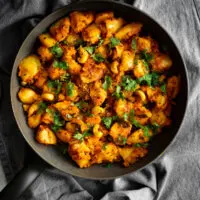

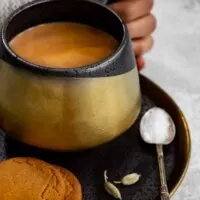
How to make soft Thepla
The key thing to remember when making Soft Gujarati Thepla at home is that the dough must be soft. Unlike poori making, the Thepla dough needs to be bound with sufficient water and oil. Some cooks also add plain yoghurt (dahi) to the dough for added richness.
Tips for making the softest Gujarati Thepla
I like to use a combination of warm water and warm almond milk to bind my dough. This is not traditional but my way of ensuring my Thepla are super soft and delicious. Using almond milk also means these Thepla are vegan due to the lack of yoghurt used to bind the dough.
Another ingredient I like to add to help achieve this is chickpea flour. The chickpea flour gives these Thepla an incredible, nutty flavour.
Where to buy fresh methi (fenugreek) in the UK

I recommend visiting your local fruit and vegetable market. South Asian food shops and greengrocers will certainly have bunches of fresh methi.
Many large supermarkets now stock fresh methi in their ethnic produce sections.
How to clean fresh methi
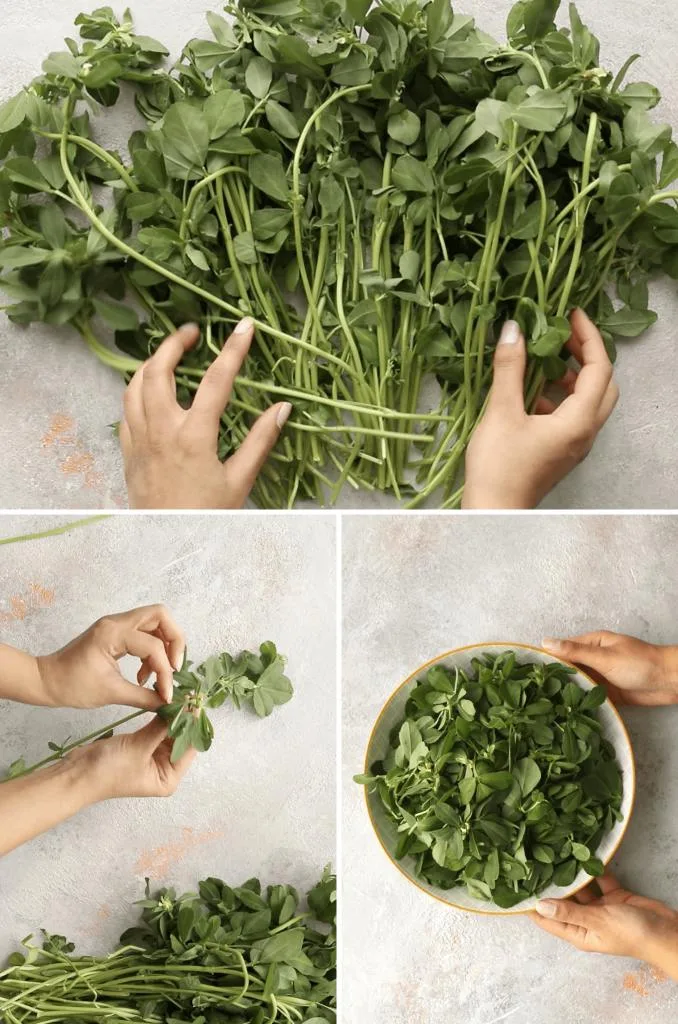
- Pick and pluck though the fresh methi – Start by picking through the methi. Pluck off only the leaves and young stems. The thick stems are edible but I don’t tend to use them for curries like this, since they require long cooking and can be tough to chew. Pick out any methi that looks less than fresh, too — large bunches will usually have a few of these.
- Wash the methi leaves – Thoroughly wash fresh methi in plenty of cold water, either under running water or in a large basin or bowl. If you use a bowl, change the water 3-4 times to clean all surface dirt.
- Drain the methi – Drain the methi leaves in a colander or sieve because we need all the water out.
- Chop the methi – Finely chop the methi leaves. They are now ready to use in this recipe for Methi Thepla.
How to freeze fresh methi
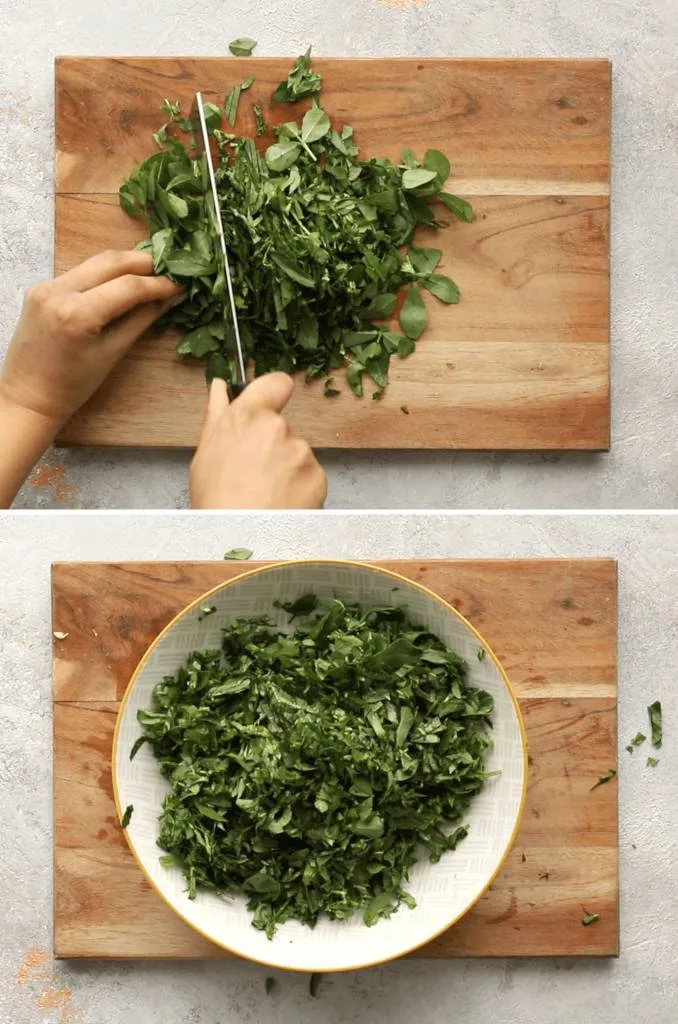
Follow all the steps in the how-to above. Ensure the methi leaves are completely dry before packing into a freezer-safe container or bag. Freeze for 6-8 months.
Can I use dried methi to make Thepla?
Of course. However, they will lack the beautiful green-speckled surface achieved when making them with fresh fenugreek leaves. While kasoori methi is fine to use, remember that the flavour is incredibly strong in comparison to fresh methi leaves. Therefore, you will need to use much less.
I’d recommend using 1 tbsp dried methi in this recipe, ground finely between your palms. Remove any sharp, dried stalks as they will affect the way the Thepla roll.
Reconstitute the methi in 1 tbsp hot water and allow to stand for 5 minutes before adding it to the dough. For a burst of green colour, you can also add a handful of freshly-chopped spinach leaves or fresh coriander leaves. Ensure any leaves are very finely chopped.

Ingredients you’ll need to make Soft Gujarati Thepla
- Wholewheat chapati flour (roti atta)
- Fresh fenugreek leaves
- Chickpea flour (besan)
- Garlic
- Jaggery (gor) or brown sugar
- Sesame seeds
- Turmeric
- Chilli powder
- Salt
- Almond milk
- Water
- Oil
Soft Gujarati Thepla recipe | methi chapati | methi roti
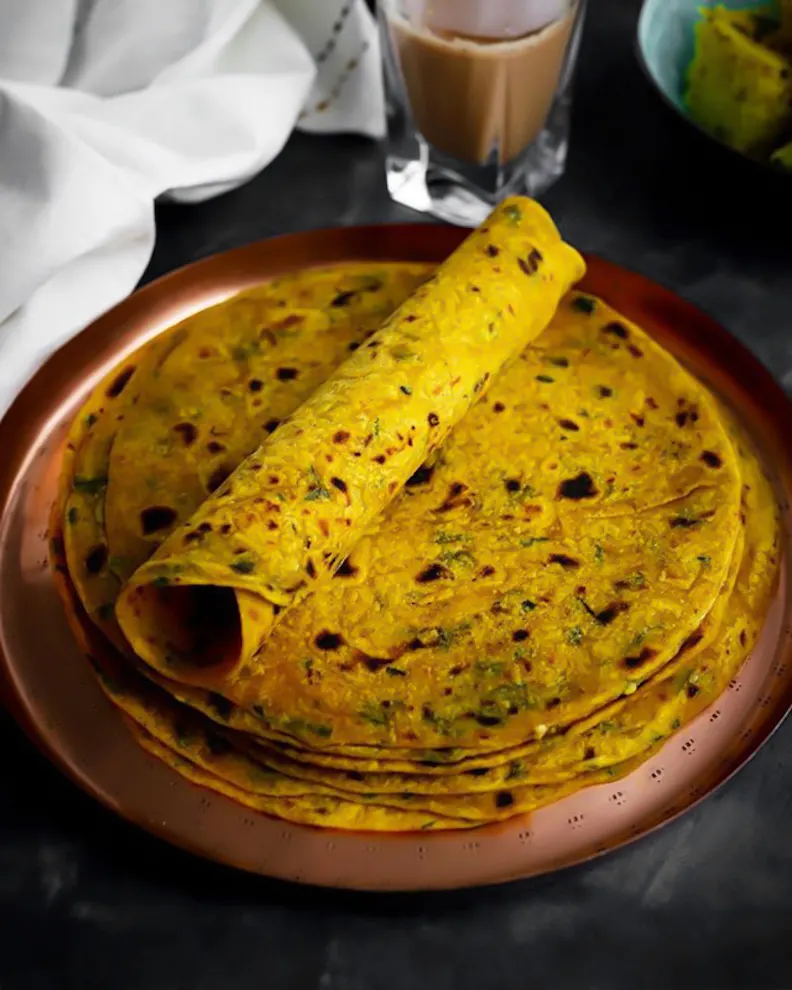
Ingredients
- 500 g wholewheat chapati flour I use Pilsbury Chakki Atta
- 75 g fresh fenugreek leaves very finely chopped
- 2 tbsp chickpea flour
- 1 clove garlic crushed
- 2 tbsp sesame seeds
- 1 tbsp jaggery
- 1 1/4 tsp turmeric
- 1 1/2 tsp chilli powder
- 1 1/2 tsp salt
- 150 ml almond milk warm
- 275 ml hot water
- 3 tbsp oil + more for cooking
Instructions
- Mix together the chapati flour, chickpea flour, sesame seeds, garlic, chilli powder, methi leaves and salt.
- In a separate jug, stir together the hot water and jaggery until completely dissolved.
- Make a well in the centre of the flour and add the jaggery water and almond milk. Stir with a spoon to combine. Once cool enough to handle knead to form a smooth dough, about 5 minutes. Add the 3 tbsp oil and knead for a further 3-4 minutes. Cover with a damp tea towel and rest for 15-20 minutes.
- Make golf ball-sized pieces with the dough. Keep some flour on a plate for rolling.
- Get another plate lined with kitchen paper.
- Place a steel tawa or a frying pan over a medium heat. Leave it for 5 minutes.
- To start rolling, take a piece of dough and roll it between your palms, flattening it slightly. Dip each side in flour. Roll to about 6cm in diameter, place a pinch of flour in the centre and spread it around a little. Starting from the outermost edges, pinch the dough to the centre, covering the flour. Flatten with your palm. This will ensure the edges of the Thepla are perfectly smooth.
- Roll out into a large circle, about 20cm (8”) in diameter.
- Cook on the preheated tawa until bubbles appear on the surface (5 seconds), Spread a small amount of oil over the surface and then flip and cook until small brown spots appear on the base (20 seconds). Flip again and spread oil on the second side. Cook until larger brown spots (like what you see on a super ripe banana) appear on the surface. Transfer to a lined plate and repeat for the remaining Thepla.
Recipe Video
Sanjana’s Notes
- To ensure the Thepla remain soft, keep them in an insulated container for up to 12 hours. If you’re eating the Theplas the next day, wrap them in foil and keep them in the fridge for up to 4 days. To reheat, microwave the stack for 30 seconds. Individual Theplas will only take 10 seconds.
- To freeze, place sheets of baking parchment between each one and wrap well in foil. Freeze for up to 1 month. Defrost before reheating.
Pin it for later! Soft Gujarati Thepla

If you like these, you’ll love my Soft Spinach Roti recipe
More delicious Indian bread recipes
Soft Rotli (chapati) recipe
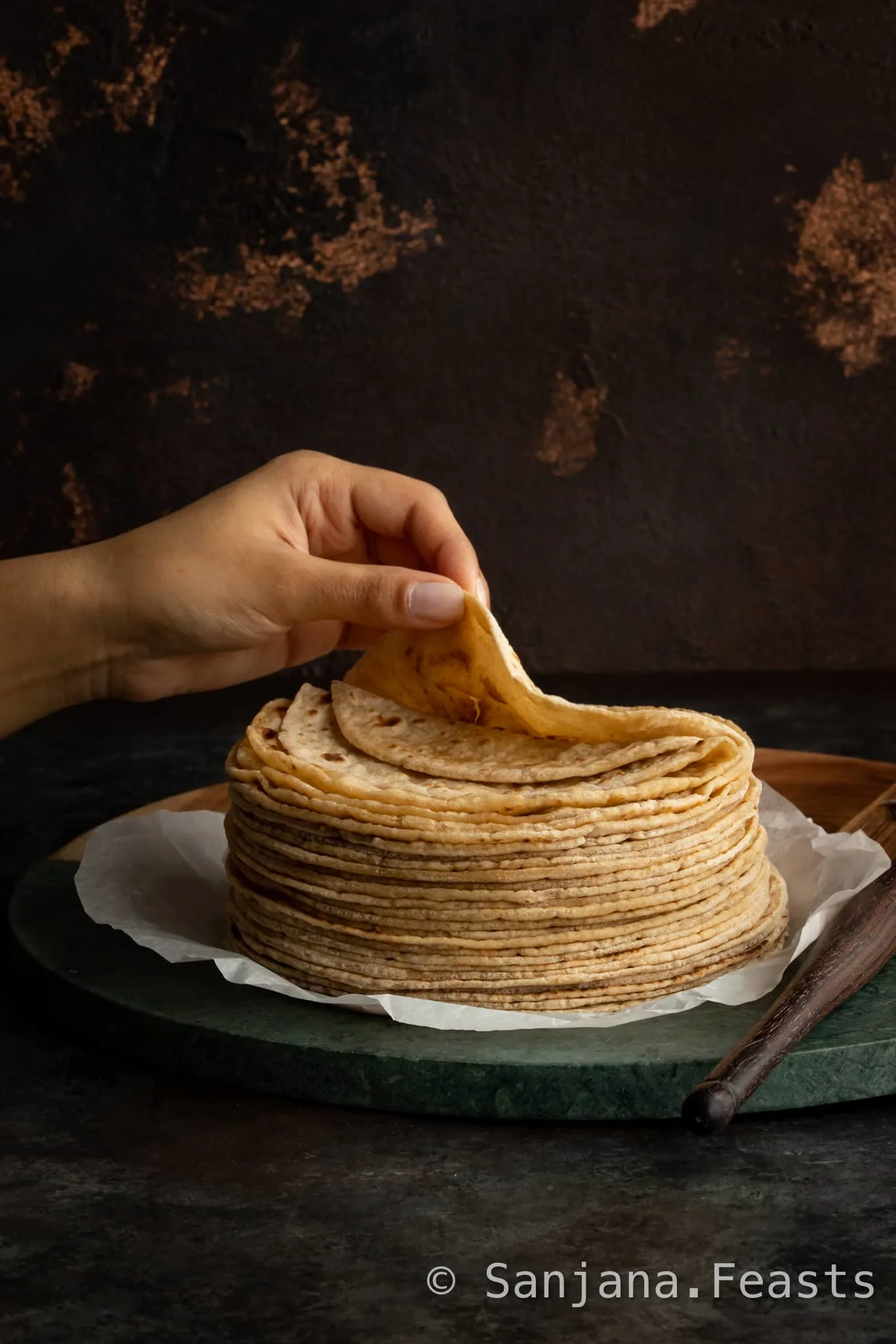

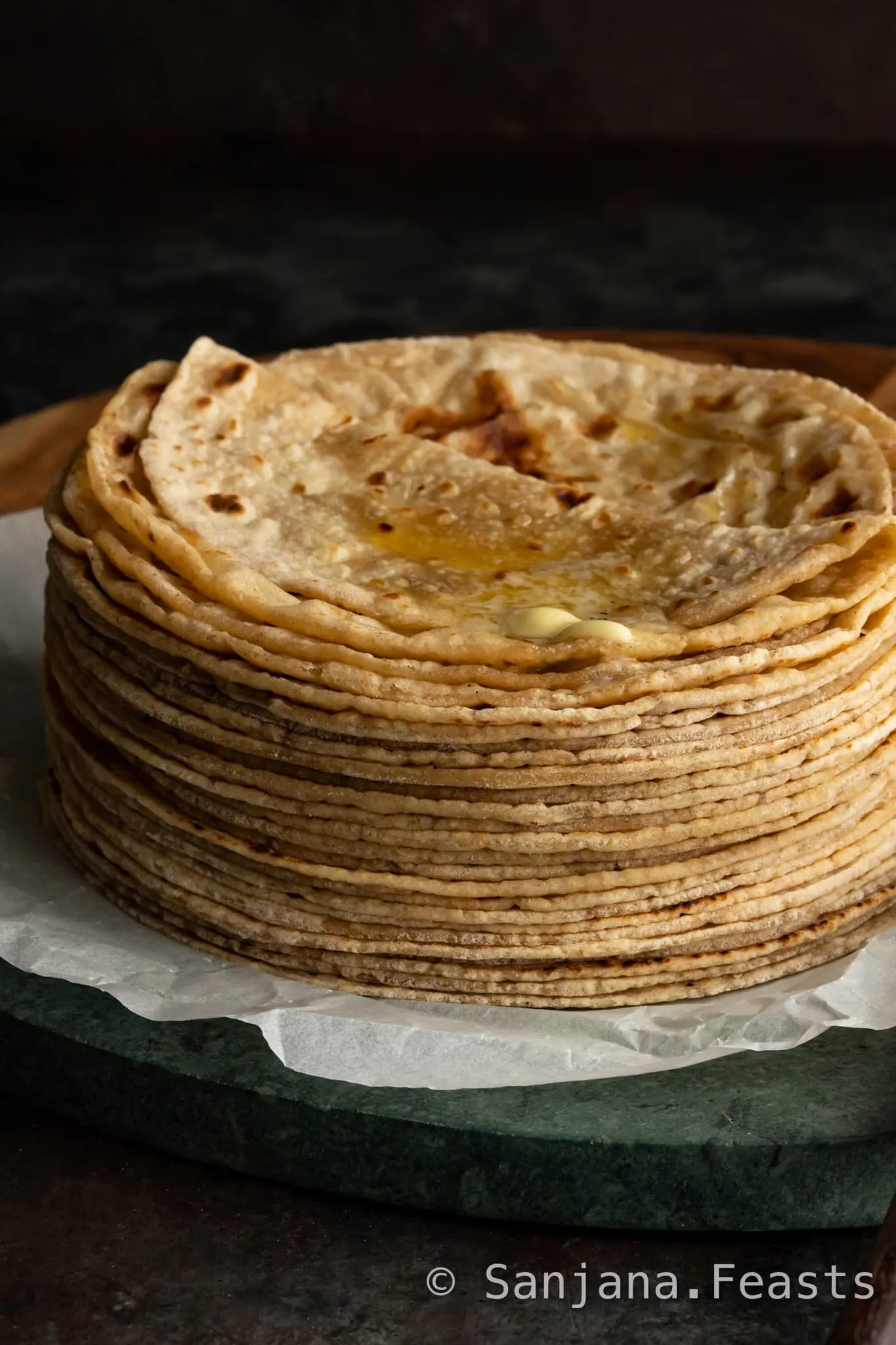
Gujarati-style phulka or rotli are a soft chapati (flatbread) we make daily using wholewheat flour. Toast rotli on a steel, iron or aluminium griddle until it puffs up like a balloon. Grab my best-ever recipe for rotli.
Other types of roti: Roomali roti, tandoori roti, khameeri roti, akki roti, besan roti, spinach roti.
Masala Poori recipe

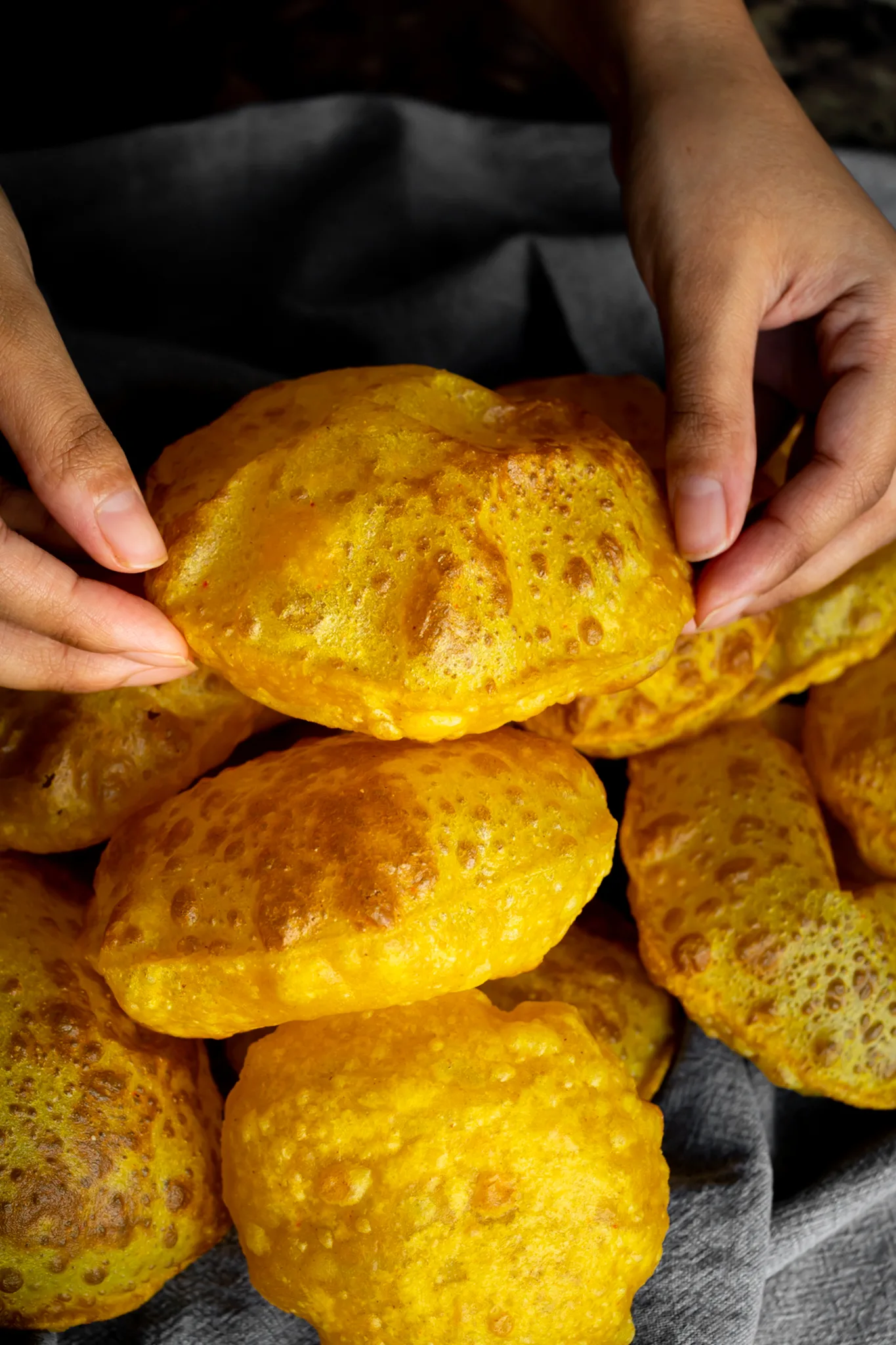

Puffy Masala Poori will forever be a Sunday morning staple. Fried whole wheat flour bread with mild spices, a double layer and hollow middle. The little circles of dough rise before your very eyes for a magical cooking experience — and an even more spectacular eating experience. Here’s my recipe for perfect Masala Poori.
Other types of poori: Plain poori, lucchi, puran puri (puran poli).
Aloo Paratha recipe
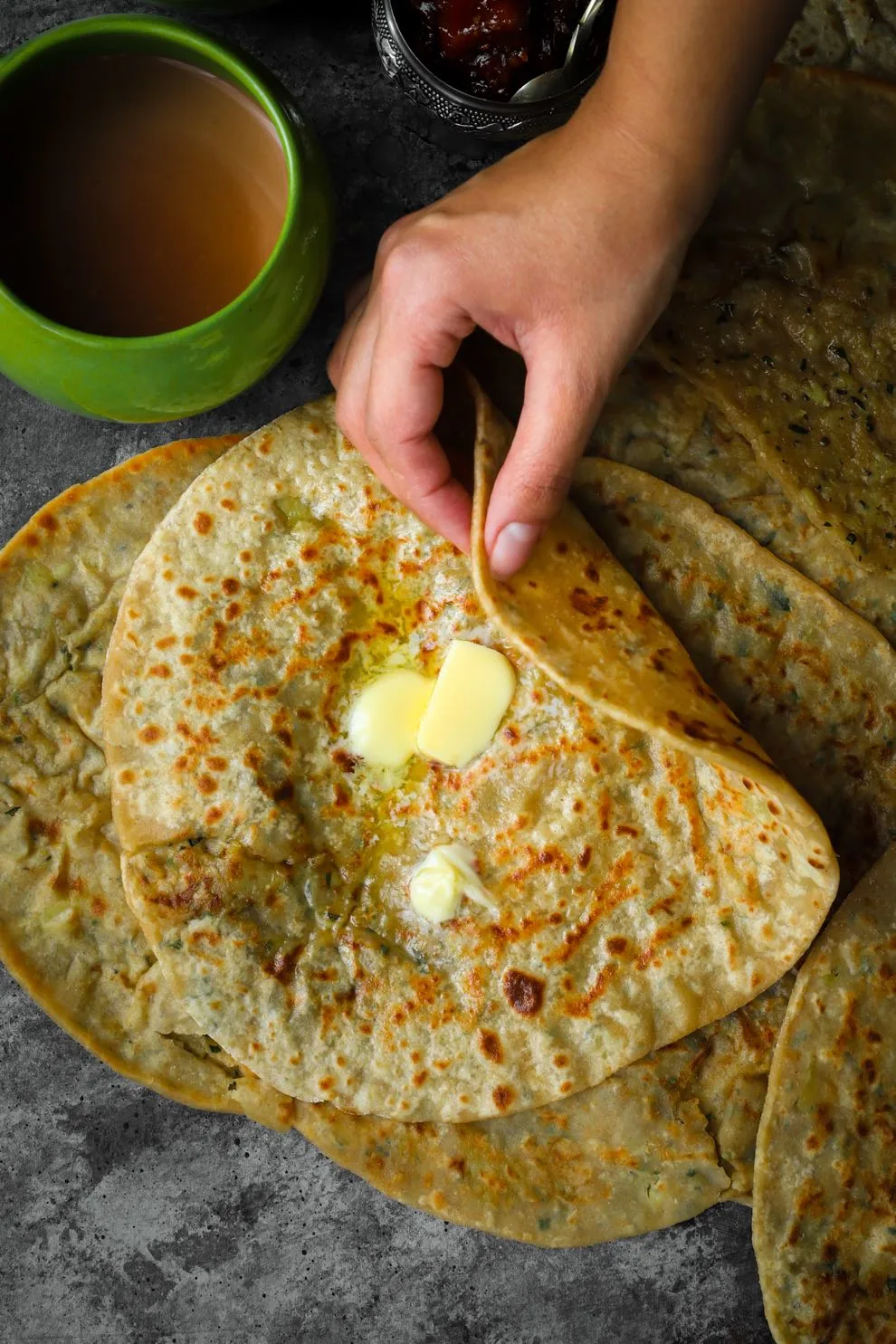

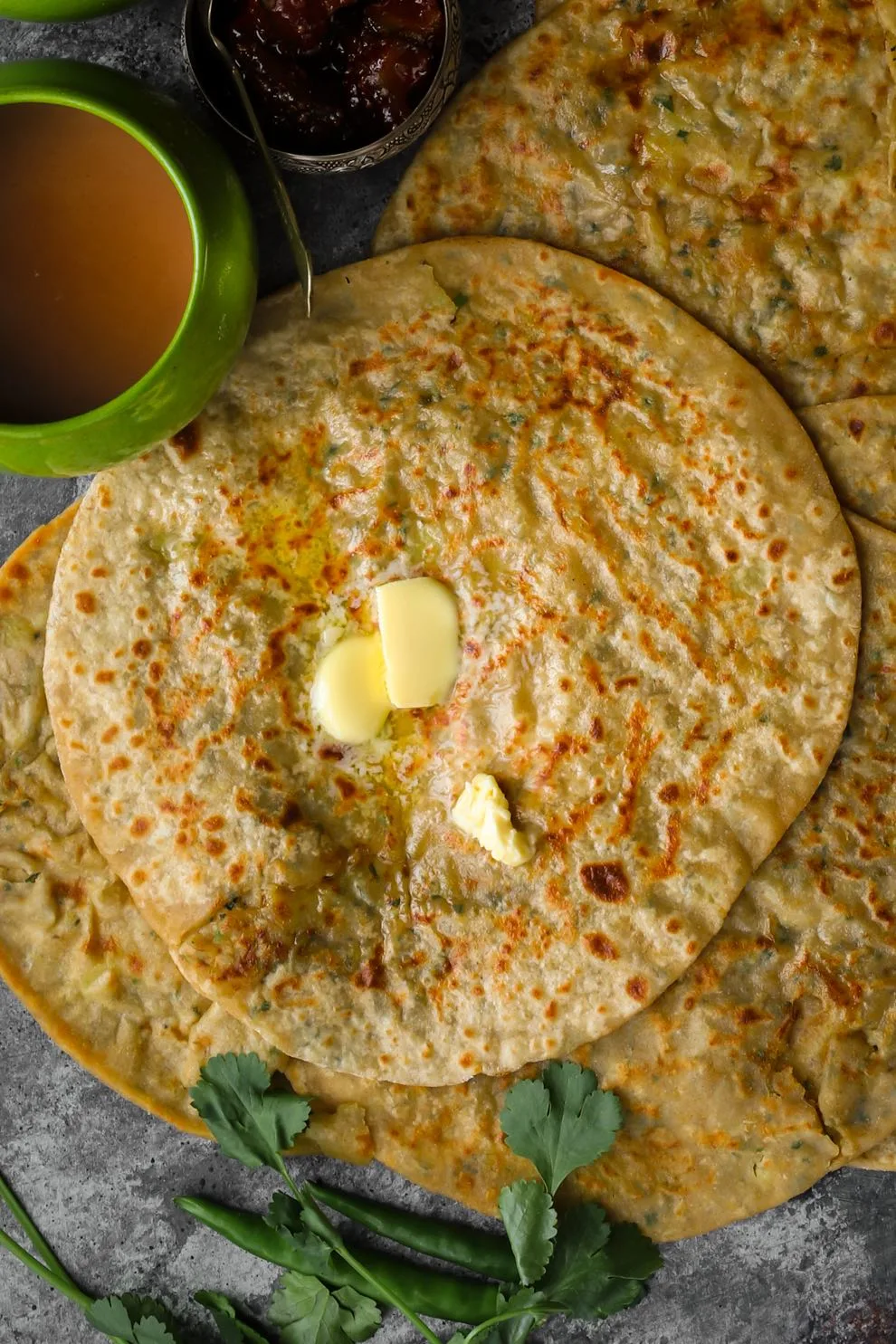
Crispy, flaky Aloo Paratha (Potato-Stuffed Flatbread) are an emblem of soulful Indian home cooking. Almost every home has their own unique recipe and technique for making this delicious North Indian stuffed flatbread. Here’s my recipe for Aloo Paratha.
Other types of paratha: Mooli paratha, laccha paratha, pepper paratha, Malabar paratha, parotta, daal paratha, paneer paratha, keema paratha.
Paneer Kulcha recipe
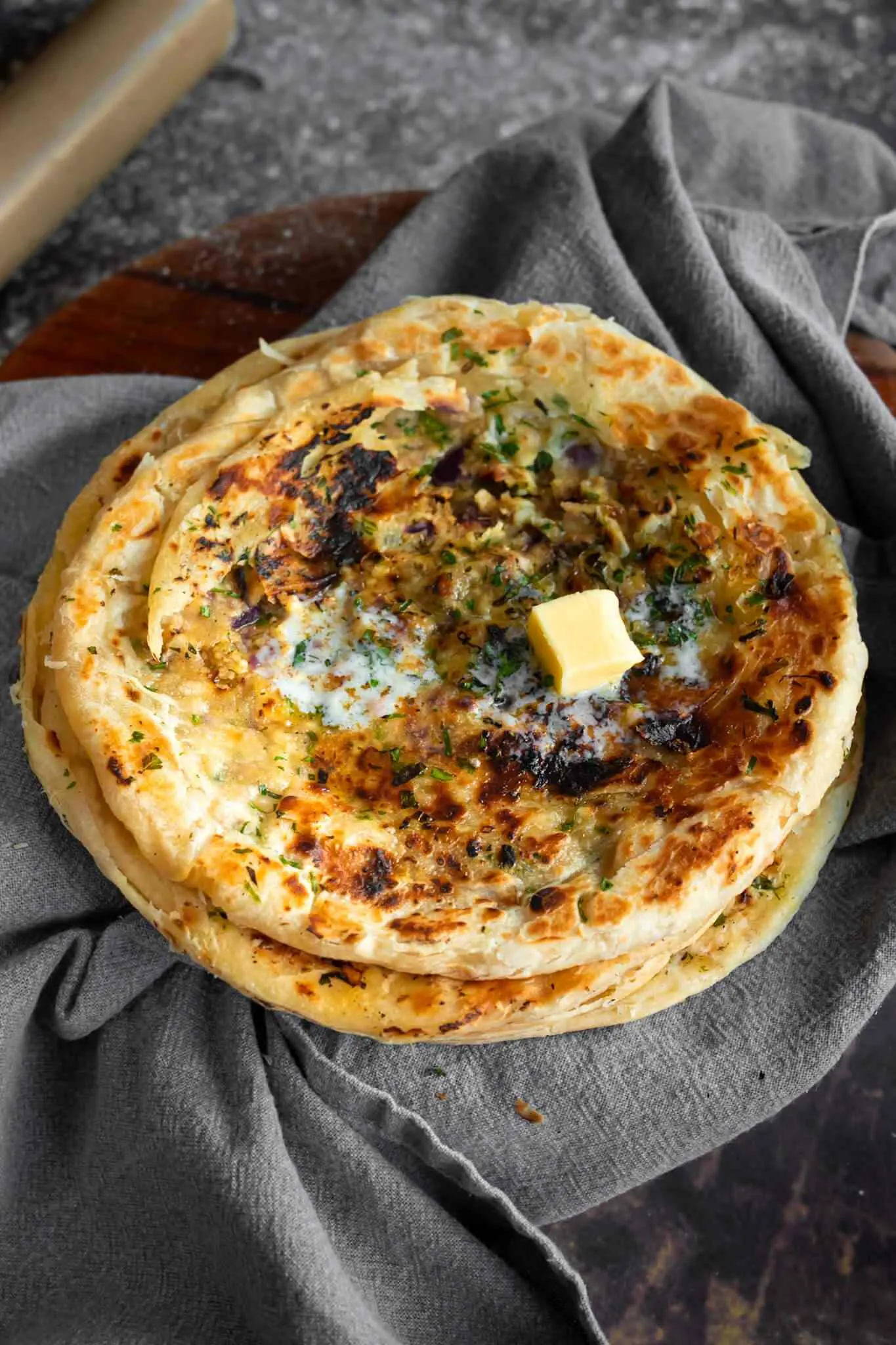
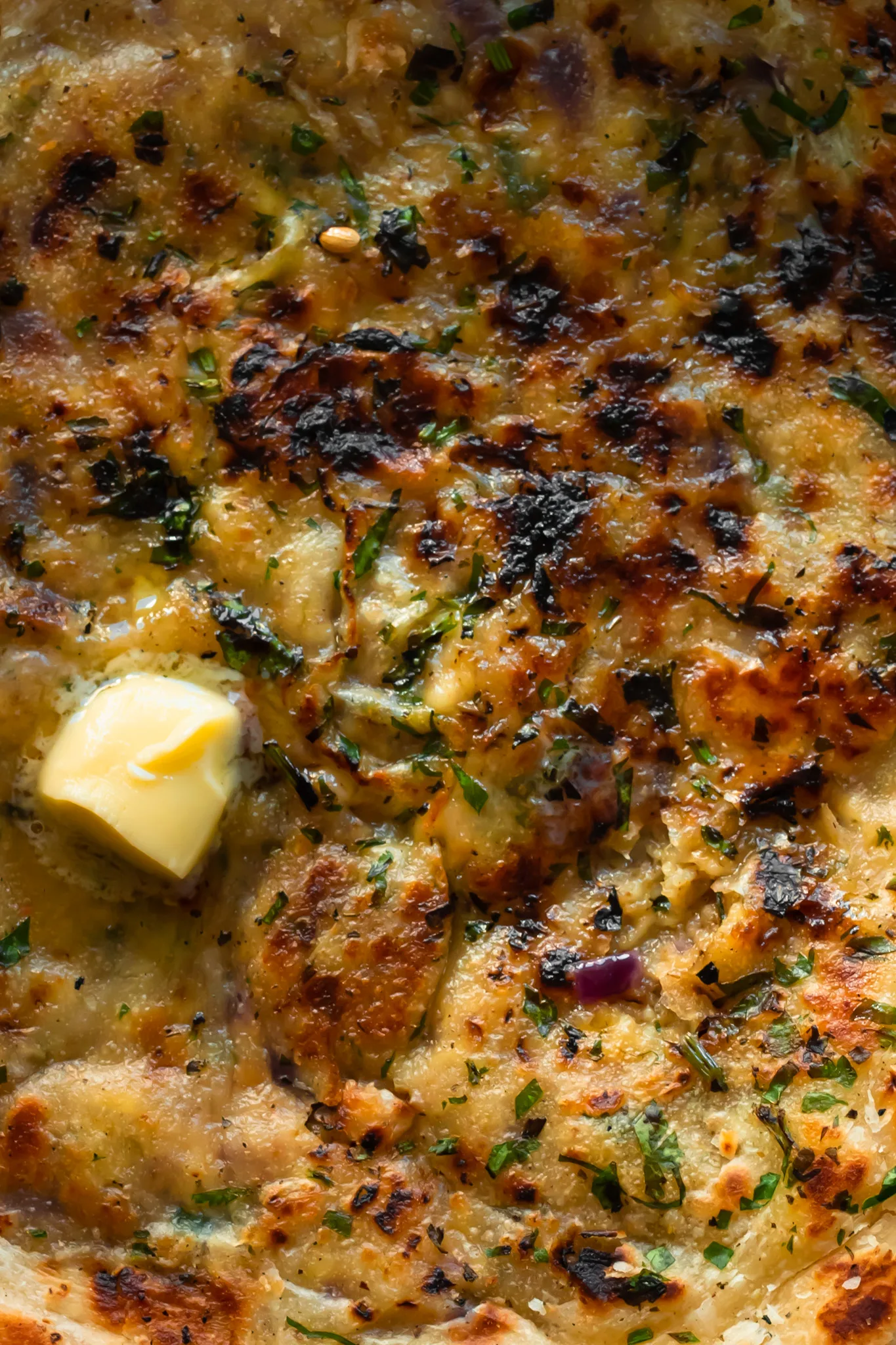
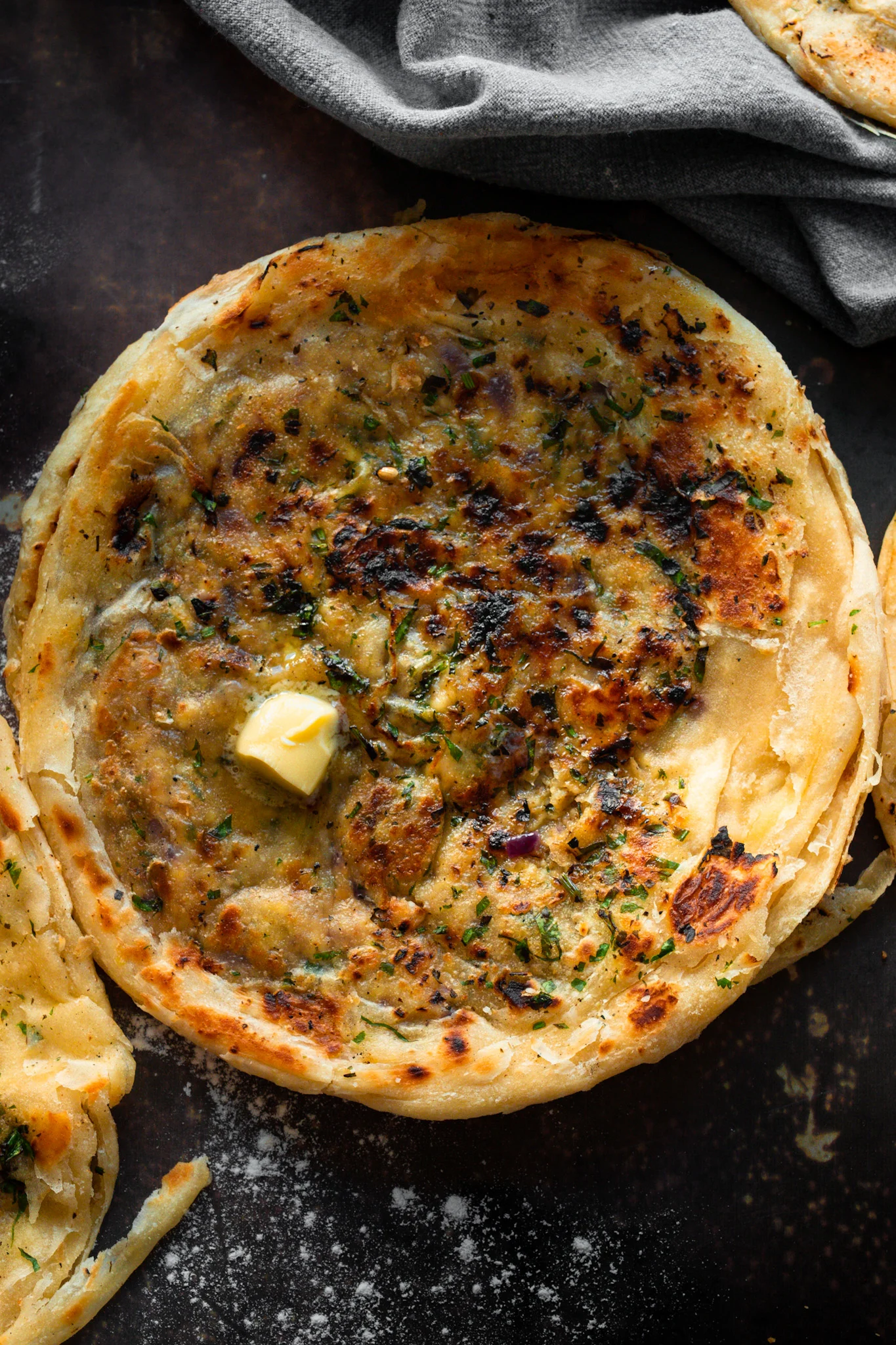
A cross between naan and paratha. Learn how to make ultra-flaky Amritsari-style Paneer Kulcha with me. These flatbreads are famous in North India for their crispy layers of dough and delicious variety of fillings. I stuff my Kulcha with soft paneer, onions, ginger, chillies and a blend of toasted spices. Get the recipe for Paneer Kulcha here.
Other types of kulcha: Aloo kulcha, plain kulcha, matar kulcha, Amritasri kulcha, bread kulcha, cheese kulcha.
Cheese Naan recipe

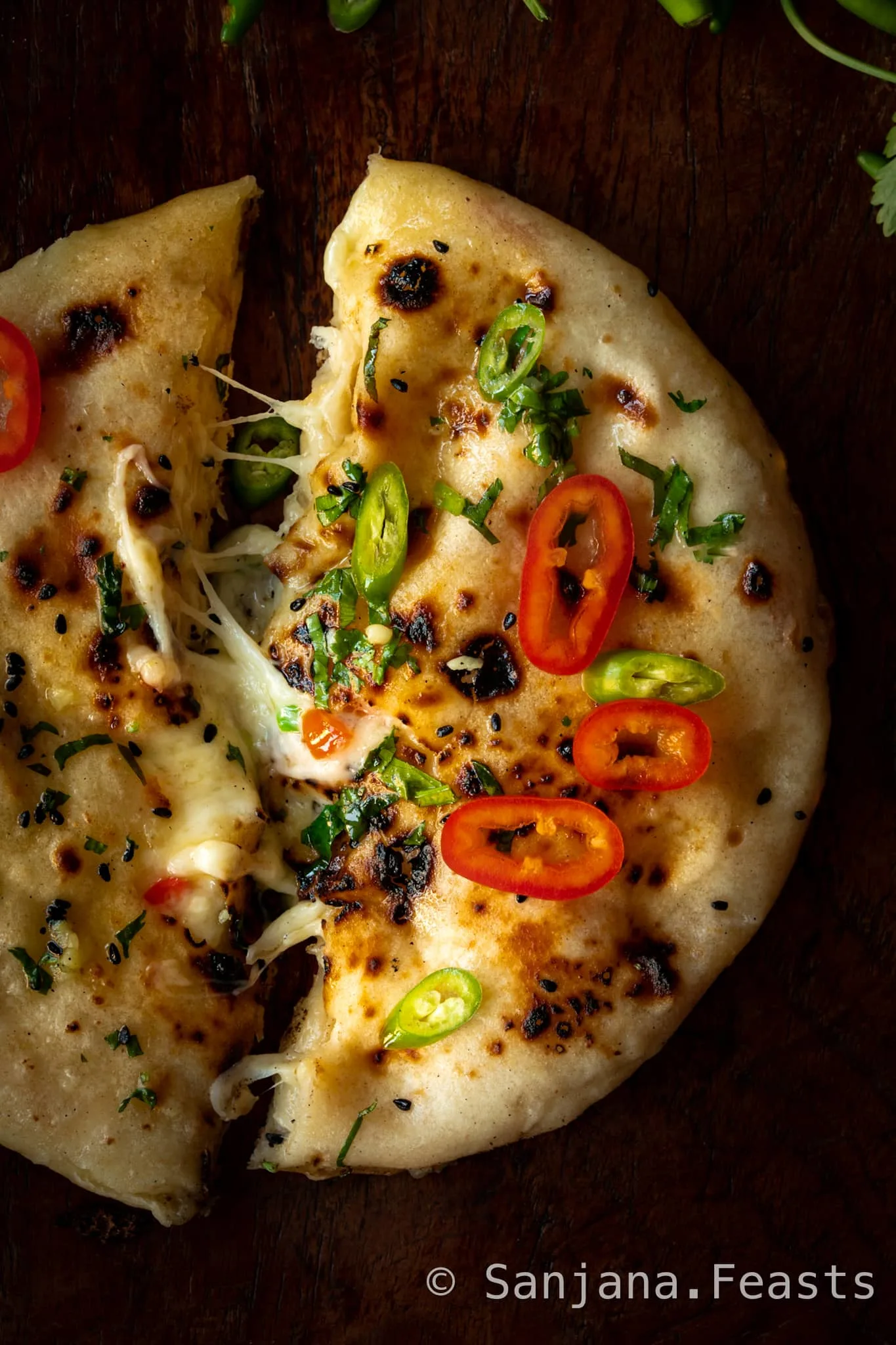
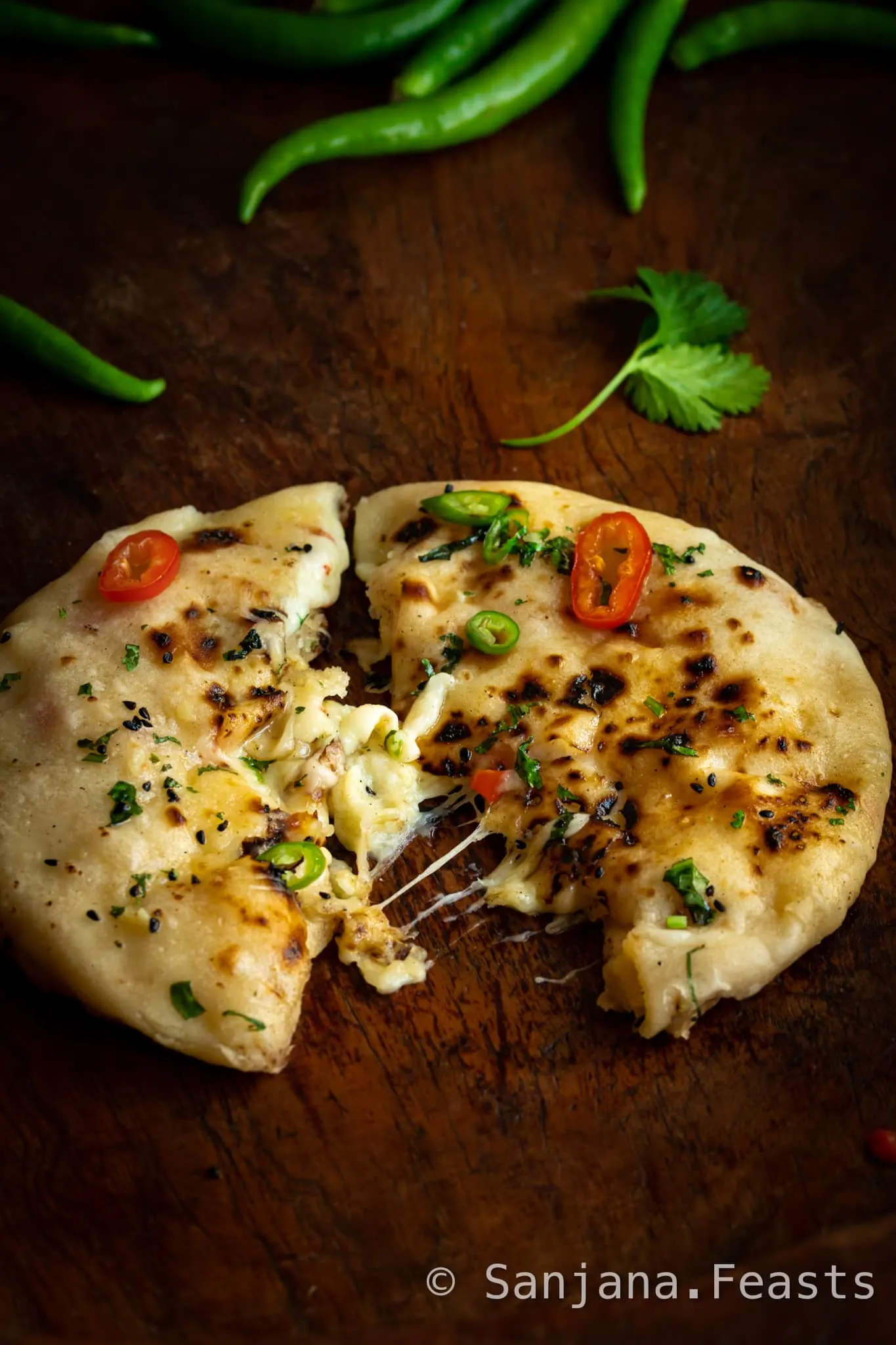
This puffy, blistered Bullet Cheese Naan has a chilli-cheese stuffing and is the softest, most delicious bread for mopping up curry, daal or even eating with your favourite tandoori dishes. This spicy take on cheesy garlic naan is a must for chilli lovers. Grab my Cheese Naan recipe here.
Other types of naan: Garlic naan, chilli naan, chur-chur naan, pudina naan, coriander naan, keema naan, khameeri (yeast) naan, yoghurt naan, Peshawari naan.
Love Sanjana

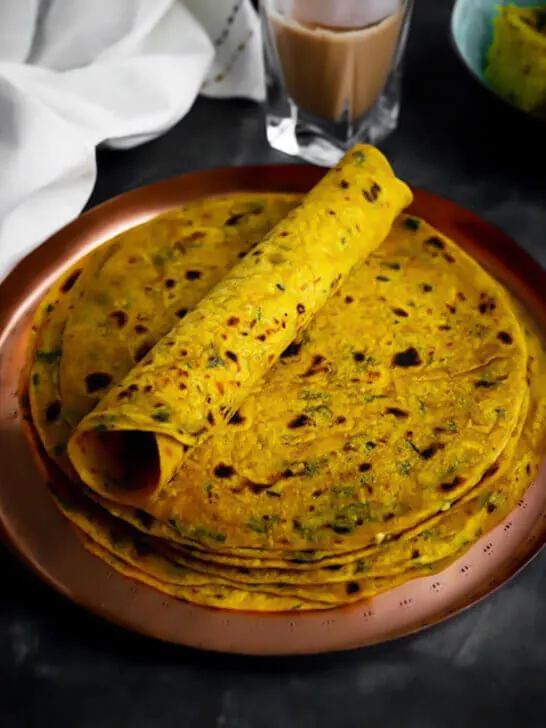

Navya
Sunday 23rd of June 2024
Do you use vanilla almond milk or unflavored? Non fat or regular? Please specify
Sanjana
Friday 28th of June 2024
Unflavoured and unsweetend almond milk. Don't use vanilla flavour.
Burnt Aubergine in Yoghurt (Dahi Varo Oro) - Indian Vegetarian Recipe
Tuesday 18th of June 2024
[…] Thepla (Fenugreek Flatbread) […]
Aloo Paratha (Potato-Stuffed Flatbread) - Sanjana.Feasts - Indian Breads
Tuesday 22nd of August 2023
[…] Gujarati Methi Thepla recipe […]
Zendegy
Sunday 4th of September 2022
Oh, my god, SO GOOD!! I had to use kasoori methi, but I can't imagine them tasting any better. Thank you for this perfect recipe.
Jaimini
Wednesday 2nd of February 2022
I’m not a confident cook. I’m actually not very good at all. But my kids love a good thepla anyday which my mum would make for them. But, for them I tried this recipe and I honestly thank you as your measurements made it easy for someone like me to follow which in turn (all thanks to you) meant that the thepla were a massive hit with my kids. Thanks so much Sanjana. Jaimini